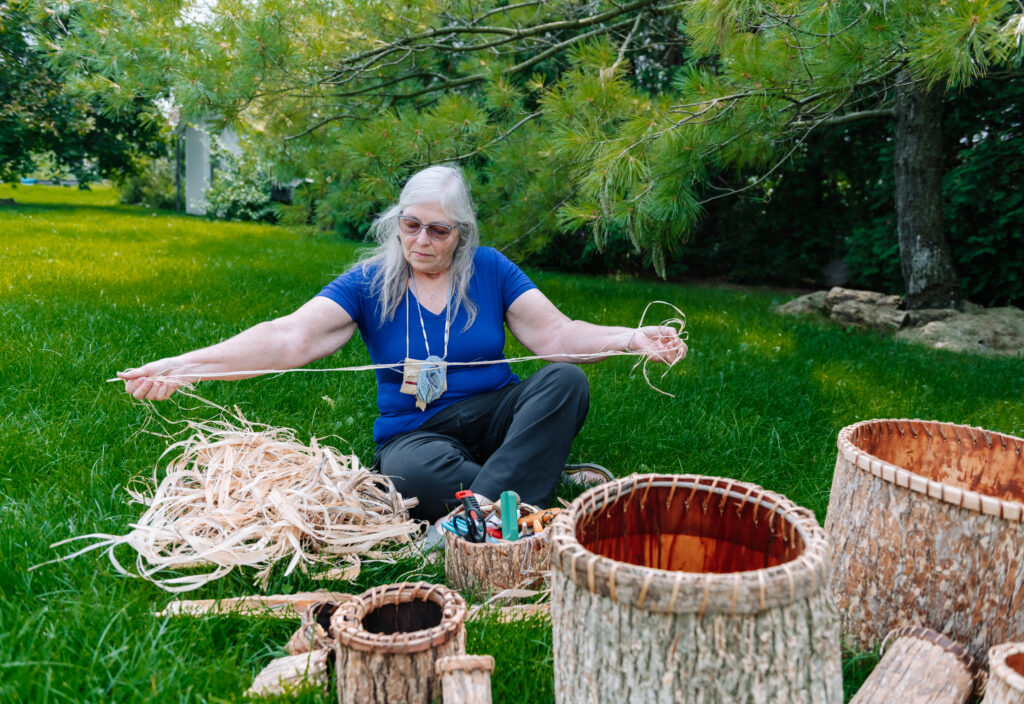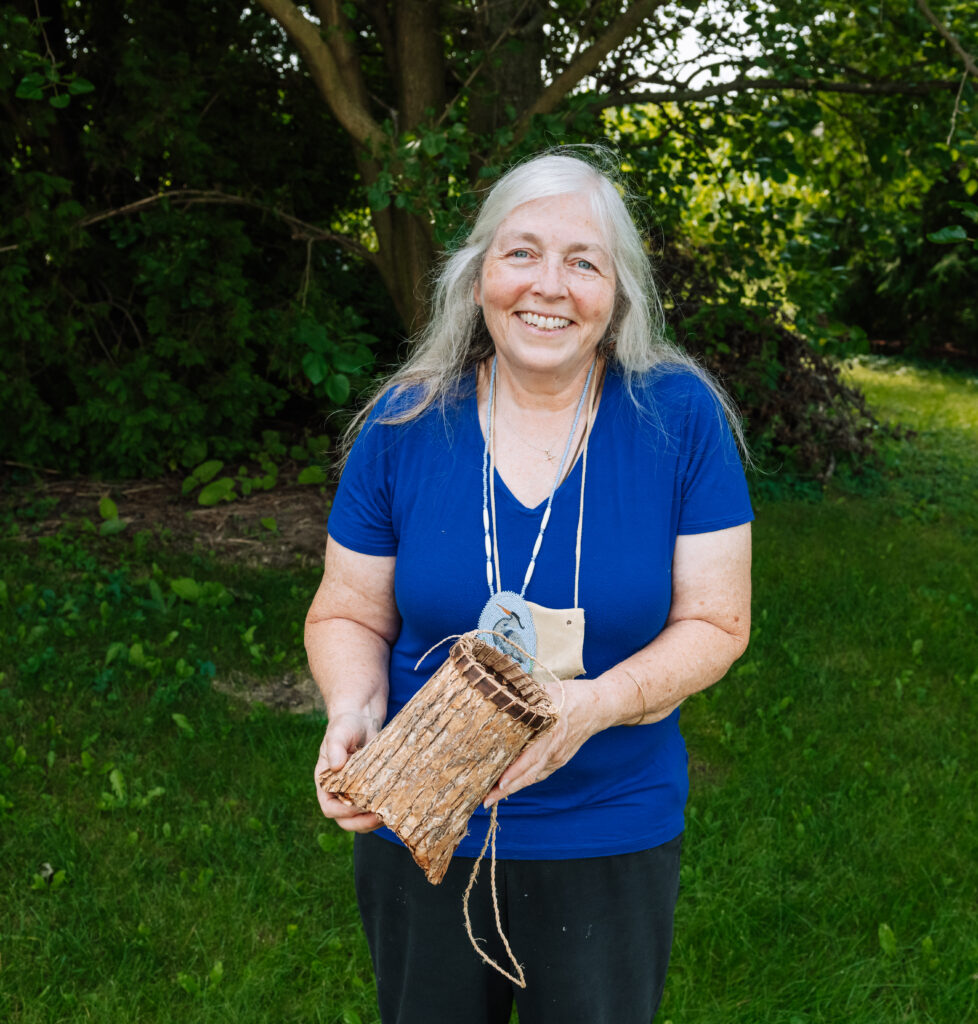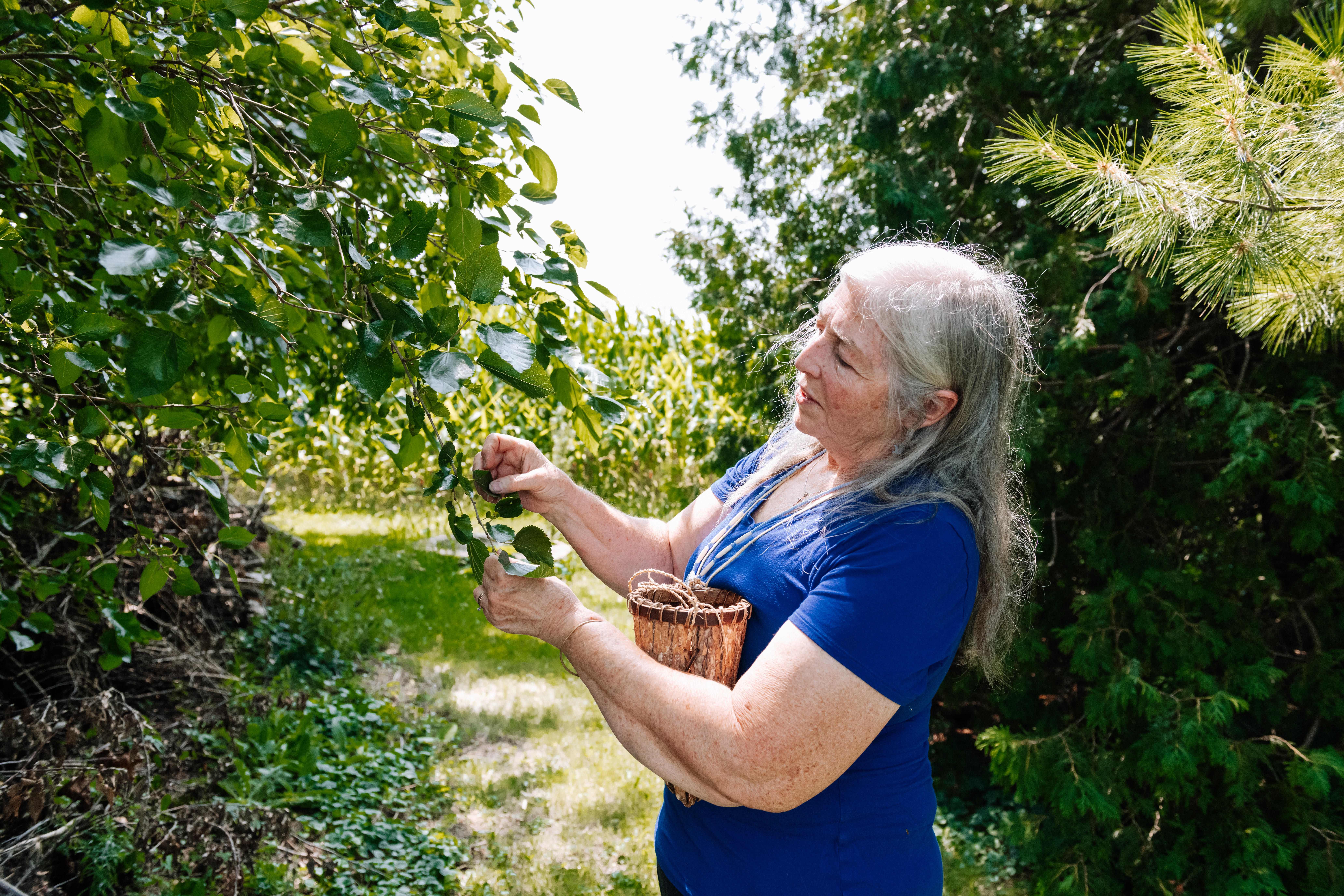Dani Tippmann’s cultural preservation work straddles the past, present and future. A member of the Miami (Myaamia) Tribe of Oklahoma, she’s a descendant of Tahkamwa and Chief Jean Baptiste de Richardville (Pinšiwa) on her mother’s side.
Speaking with authority, Tippmann proudly acts as both a tribal ambassador and gatekeeper in her community. The Miami people, who are known as Myaamiaki in their language, have lived in what is now northern Indiana since long before the first French explorers, fur trappers and missionaries encountered them in the 1600s.
The living Myaamia community, known officially as the Miami Tribe of Oklahoma, has 7,000 citizens in 49 states including 1,200 in Indiana. Tippmann, who lives in Northeast Indiana, advances Myaamia culture through traditional crafts, foodways and plant usage. It’s no surprise life took her in this direction, as her upbringing in a rural community significantly influenced her path.

“My mom and her sisters were very influential in my life,” says Tippmann. “They’d take me by the hand and help me learn things and it was so awesome.”
Her resolve was only strengthened after she got married and started raising 10 children. By the time they were school-age, she noticed a disconcerting trend in that they were taught that Native people had left the area permanently. As such, Tippmann felt like it was incumbent on her to correct this narrative.
“This is in my DNA” she says. “You know this is INDIANa and the Miami are still here. So, we want people to understand that we are here and we are relevant.”
That’s why she serves as the American Rescue Plan Act (ARPA) Community Food Program Director at the Cultural Resource Extension Office in Fort Wayne, for the Miami Tribe of Oklahoma. She’s charged with helping people from the Miami Nation in the Fort Wayne area to become food self-sufficient. That means teaching them how to grow their own food and using some wild plants as food. Tippmann herself grew up learning how to live off the land — specifically through gardening, raising animals and canning produce.
There’s more to this work than fostering mere sustenance. If you ask her, it’s also sacred.
“I think that there’s a connection here that isn’t tangible, but it’s so important to us,” she says. “As Myaamia, there is a strong connection to the land.”
Although the U.S. government tried to sever that relationship, they weren’t successful in her estimation. People like herself are spiritual successors and are carrying on the work of their ancestors.
DANI TIPPMANN“My mom and her sisters were very influential in my life. They’d take me by the hand and help me learn things and it was so awesome.”

“I like to think of our ancestors as encyclopedias — they are the ones who truly hold that information,” she says in retrospect. “A lot of times when I would talk to elders about plants, they would encourage us to learn and pass the knowledge on. “
In other words, Tippmann’s work is steeped in oral tradition. On the horticulture side, she encourages people to eat invasive species. Many are edible and are full of nutrients. For instance, she cites dandelion and lamb’s quarters as non-native varieties that have utility. For these reasons, she encourages people to take a step back and look at how these plants can add to their dishes and lives. (She also recommends consulting an expert for advice on plant identification.)
Her education isn’t limited to contributing to her own community, however. More recently, as an artist-in-residence at Indianapolis’ Eiteljorg Museum, she’s providing on-site and virtual sessions that afford patrons the opportunity to engage with her art, process and culture.





The thread that binds her life’s work is that it’s timeless and larger than herself.
“We are here and we are in the future,” she says. “A lot of times people think of us as being only in the past. We definitely have a past. We are people of the future. The knowledge that we hold is not ours. Knowledge is responsibility. One of the responsibilities is to pass on that knowledge.”
